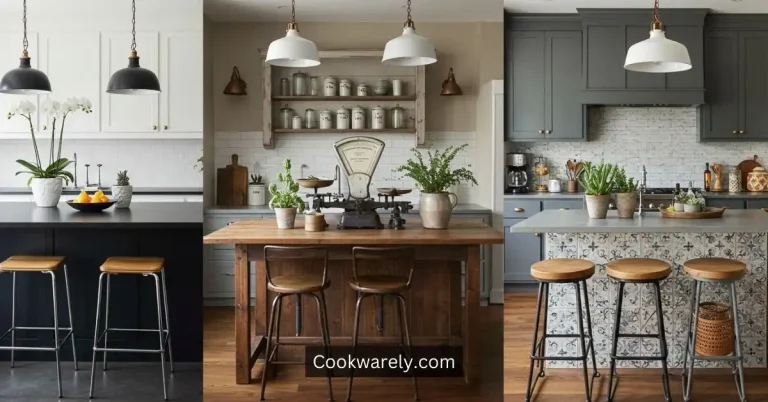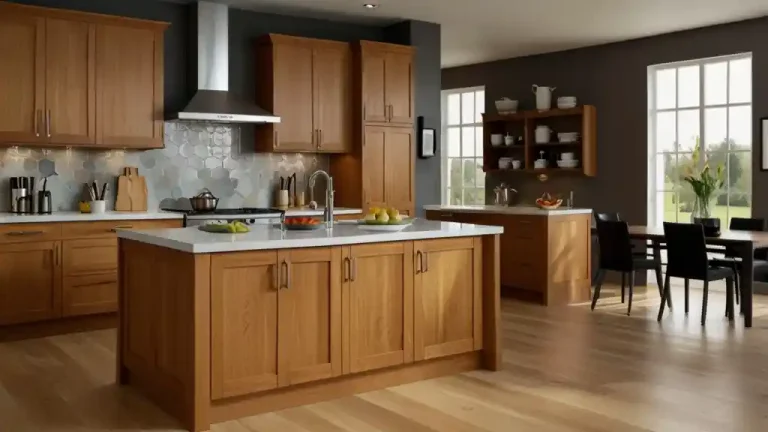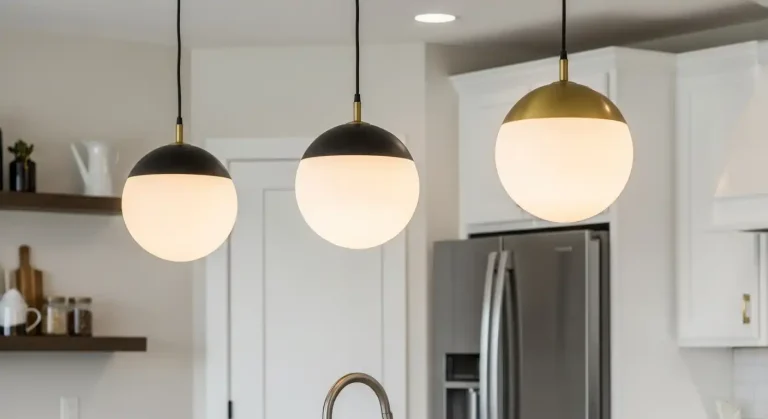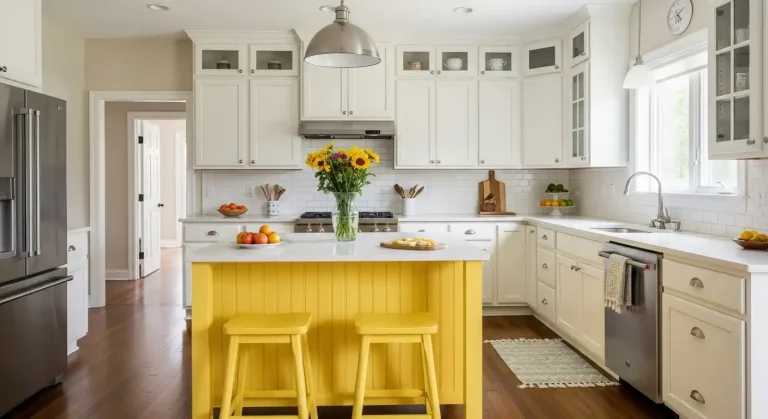DIY Pantry Organization Ideas: 20 Budget-Friendly Tricks
Tired of messy shelves and cluttered snacks? These DIY pantry organization ideas will help you keep everything neat and easy to find.
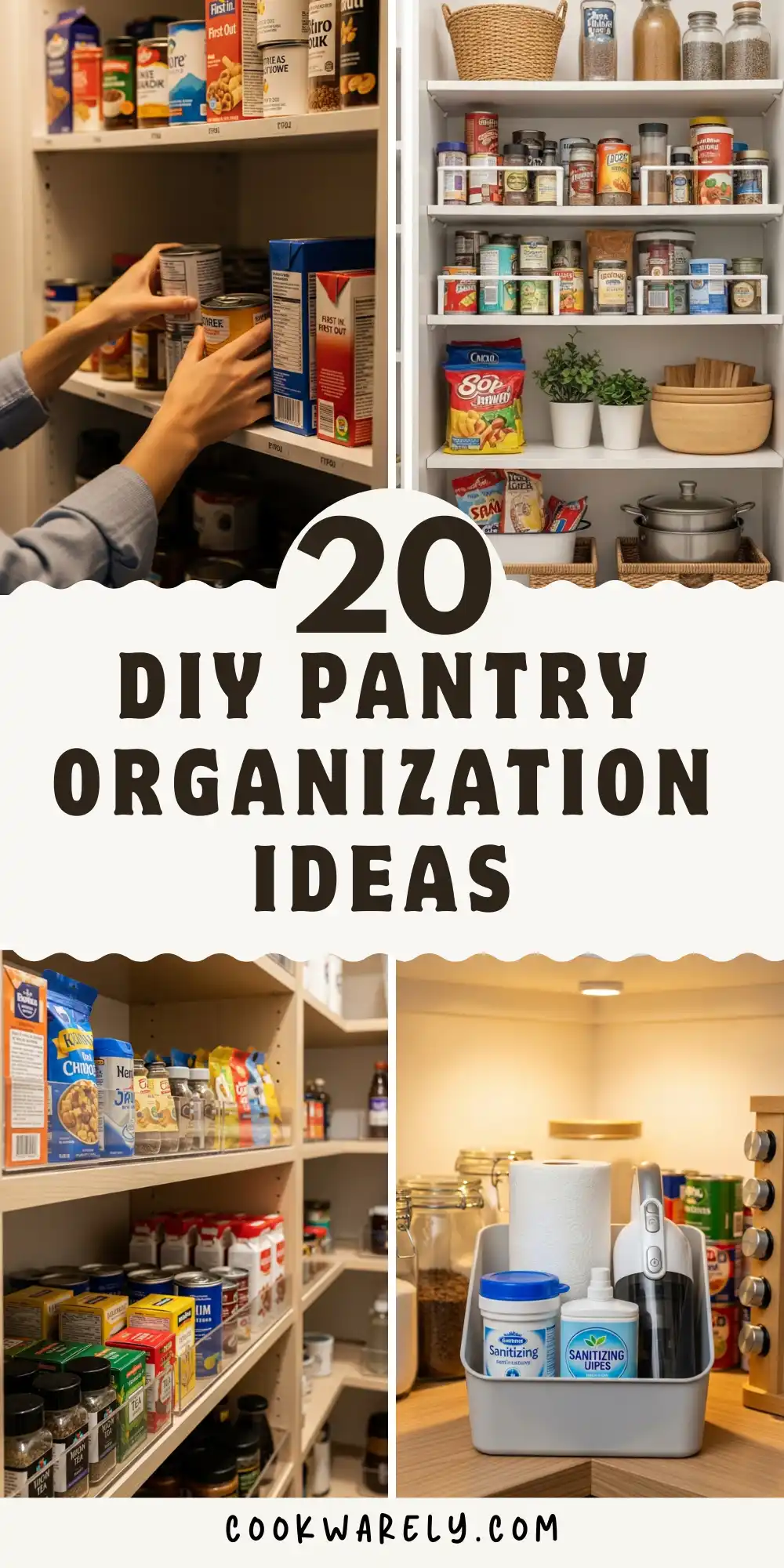
A well-organized pantry can make a world of difference in your daily routine.
Not only does it save you time when cooking, but it also helps you keep track of what you already have—so no more buying that third jar of pasta sauce by accident.
The best part? You don’t need to spend a fortune on fancy storage systems.
🎄 Christmas & Year-End Amazon Deals !
Don’t miss out on the best discounts and top-rated products available right now!
*As an Amazon Associate, I earn from qualifying purchases.
With a few creative DIY ideas, you can transform even the messiest pantry into a space that feels tidy, functional, and stylish.
In this article, we’ve gathered 20 brilliant DIY pantry organization ideas that will help you maximize space, reduce clutter, and make your kitchen look effortlessly put together.
Why Pantry Organization Matters More Than You Think
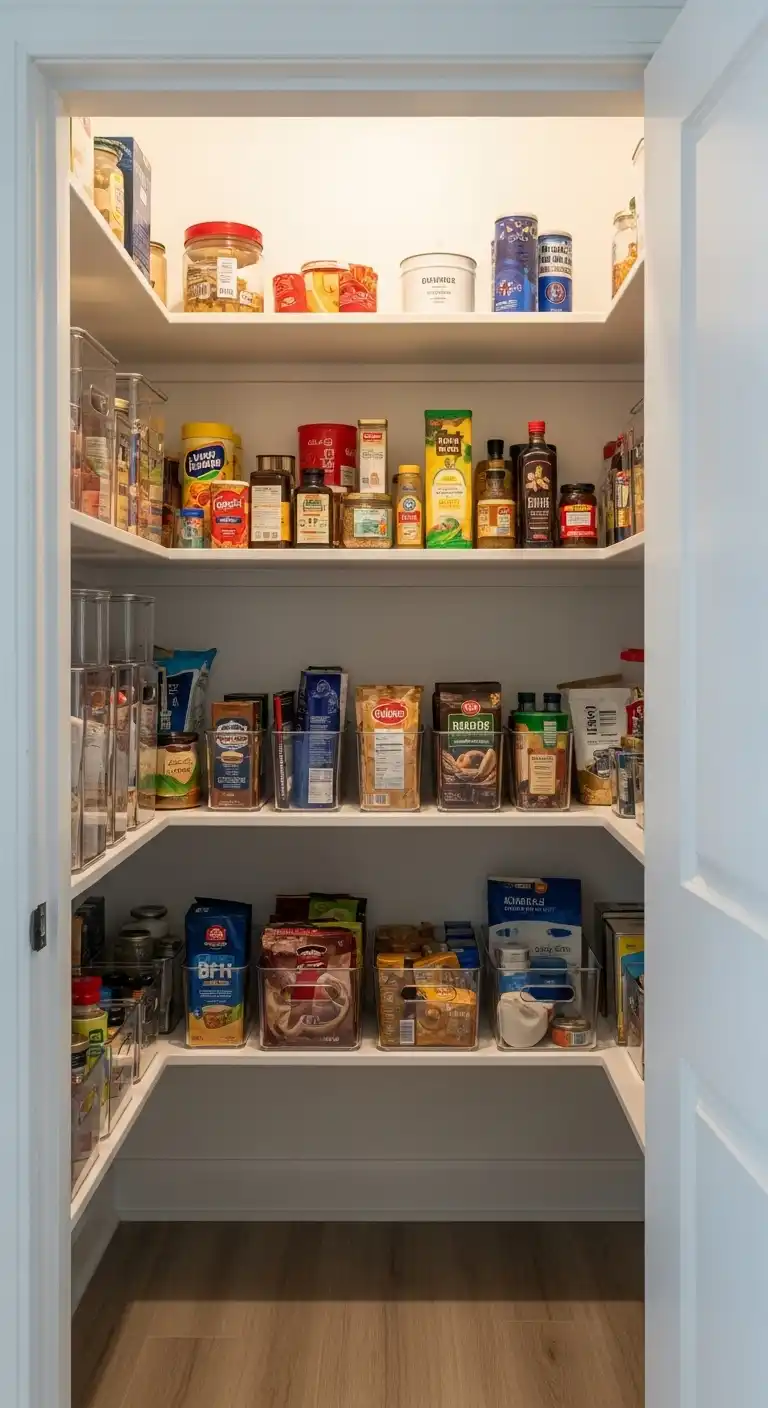
A pantry isn’t just a storage closet—it’s the backstage crew that keeps your kitchen running smoothly.
A cluttered pantry wastes time, makes grocery shopping harder, and leads to expired food hiding in the shadows.
On the flip side, an organized pantry saves money, reduces stress, and turns meal prep into a breeze.
Think of it as giving your kitchen a mini-makeover—without spending thousands on renovations.
Before You Start: Pantry Prep 101
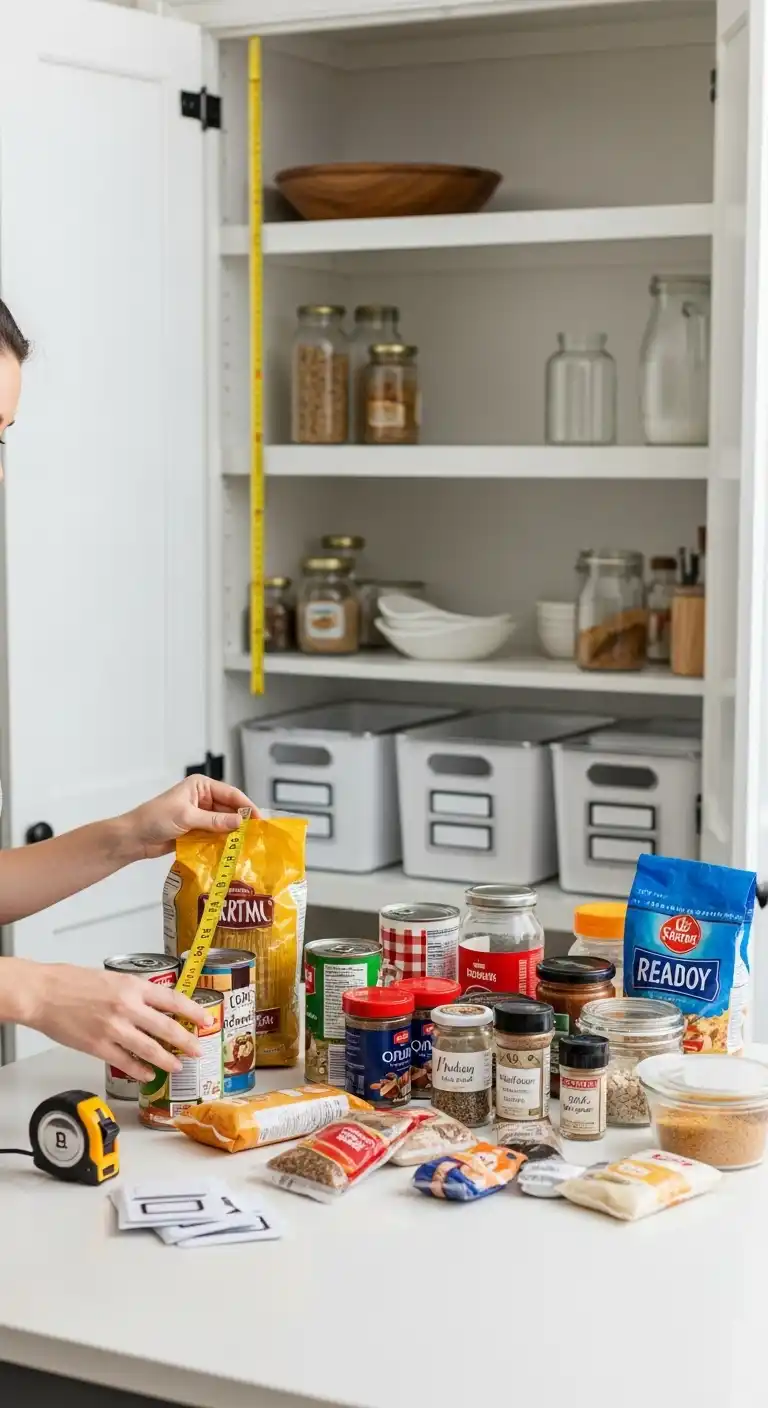
Before diving into containers, labels, and clever hacks, set the stage with these quick steps:
- Clear everything out. Yes, everything. You’ll find that half-used pasta bag from two years ago, trust me.
- Group like with like. Spices with spices, baking goods together, canned items in one place.
- Check expiration dates. Don’t keep pantry zombies alive.
- Measure your shelves. Saves you from buying bins that don’t actually fit.
This pre-work makes every organizational trick work twice as well.
20 DIY Pantry Organization Ideas
With a few DIY pantry organization ideas, you can transform your storage into a neat, accessible, and even stylish space.
Whether you’re working with a small cupboard, a walk-in pantry, or just a few shelves, these creative ideas will help you maximize space and keep everything in check. Let’s get started.
1. Use Clear Bins for Grouping
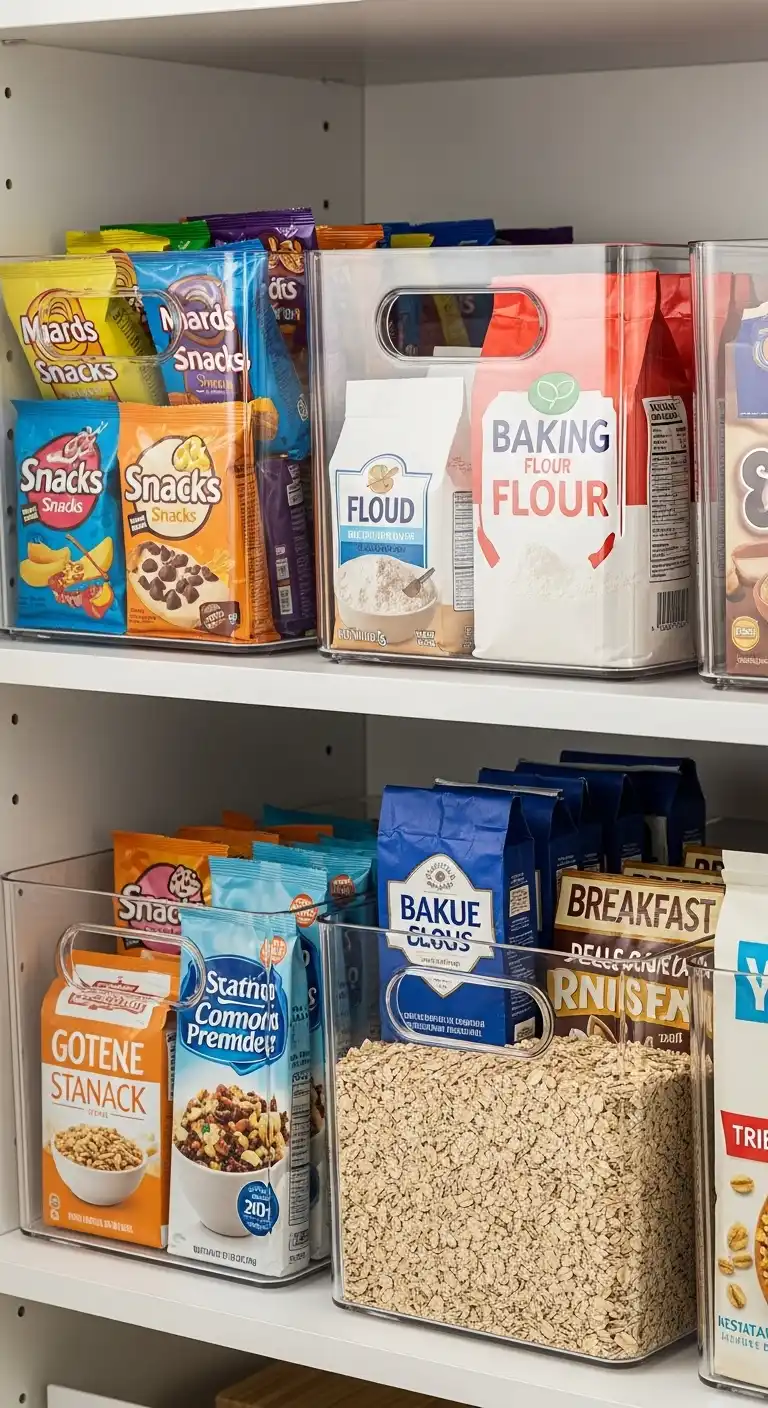
Clear bins are a game-changer when it comes to visibility.
Instead of digging through bags and boxes, you can instantly see what you have.
Use them to group snacks, baking supplies, or breakfast items.
Label each bin, so everyone knows where things belong.
🎄 Christmas & Year-End Amazon Deals !
Don’t miss out on the best discounts and top-rated products available right now!
*As an Amazon Associate, I earn from qualifying purchases.
This not only prevents clutter but also makes it easy for kids to grab what they need without creating chaos.
For more snack-specific tips, check out our guide on snack pantry organization.
2. Install Pull-Out Pantry Shelves
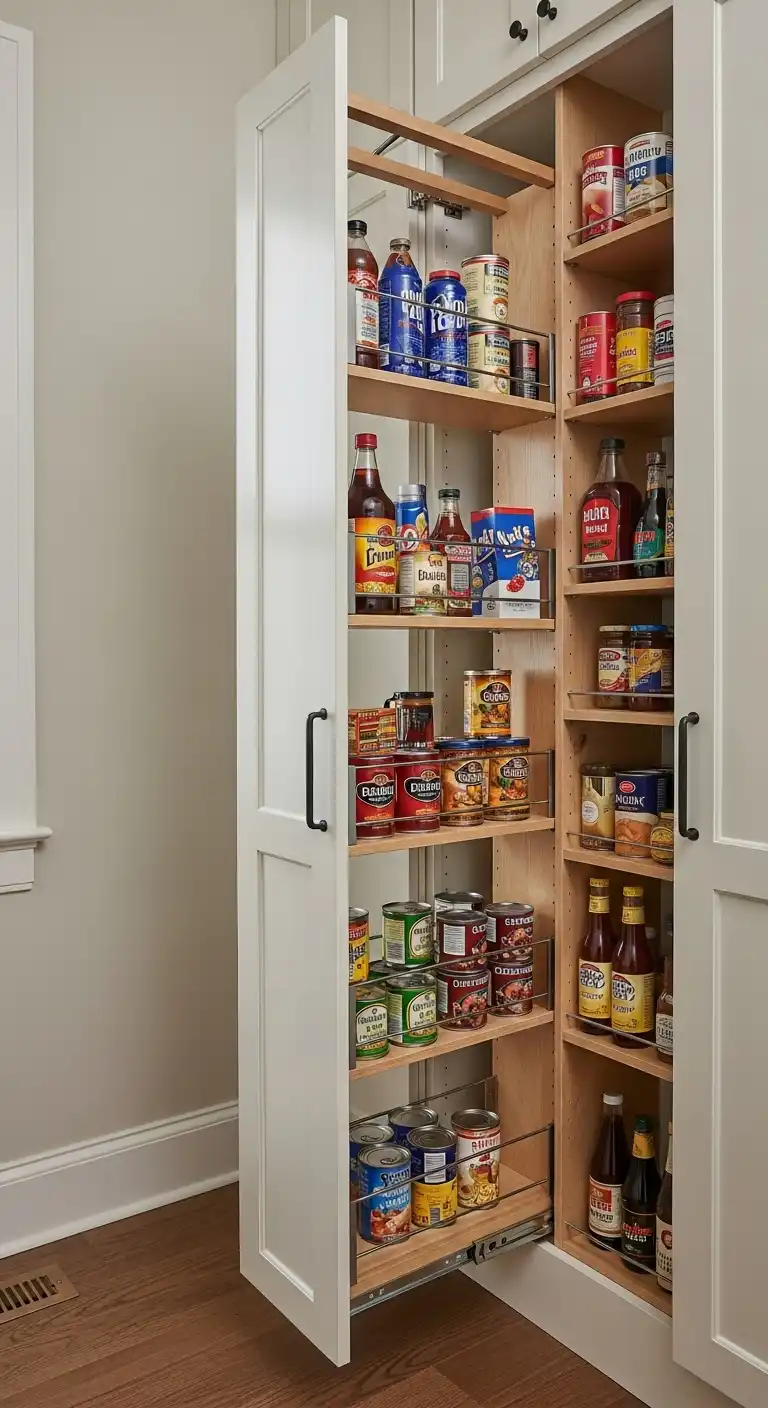
If your pantry is deep, items often get lost in the back.
Pull-out shelves make everything accessible with a simple glide.
You can DIY these with sliding drawer kits or hire a carpenter for a custom fit.
Either way, you’ll love how much easier it is to reach canned goods and sauces without bending or moving stacks.
See more inspiration in our full article on pull-out pantry ideas.
3. Use Mason Jars for Dry Goods
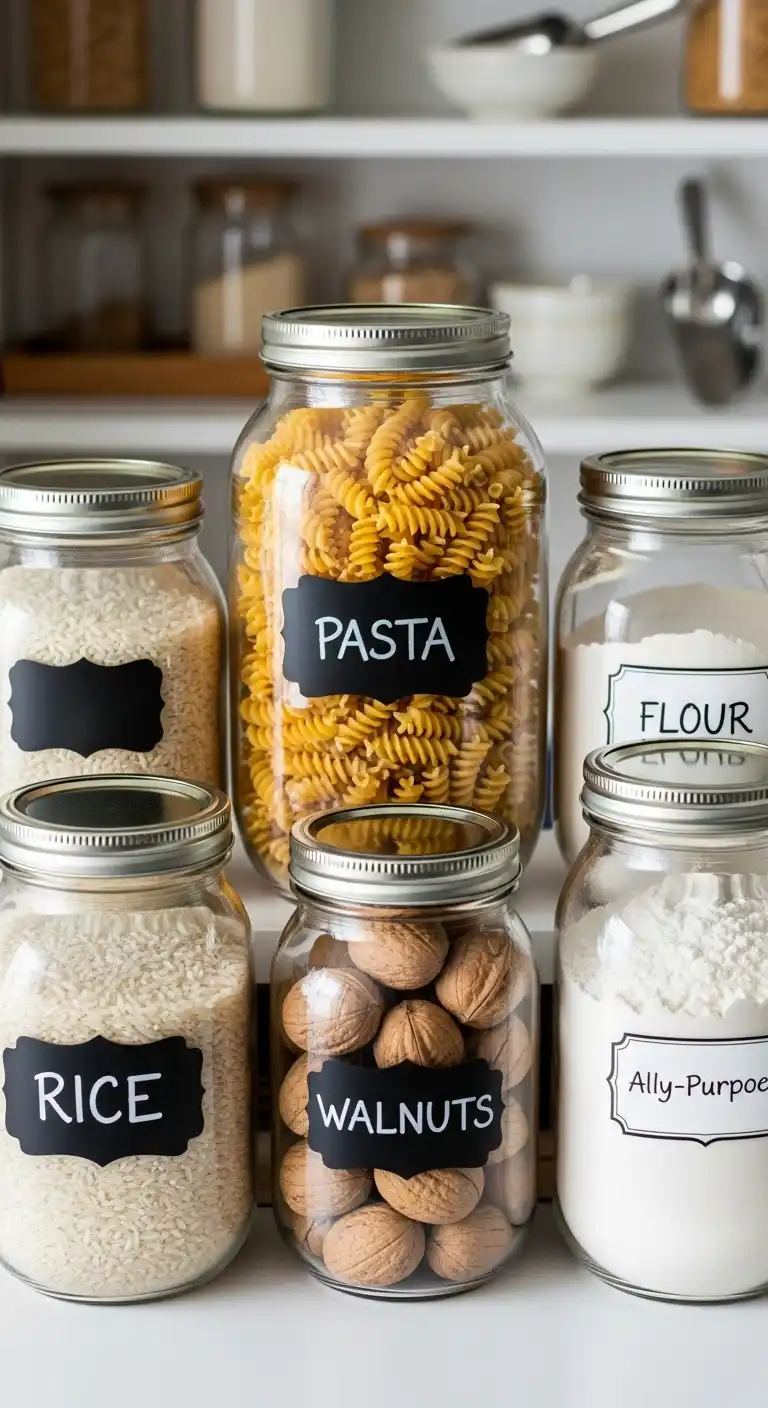
Mason jars are inexpensive and stylish.
They’re perfect for storing rice, pasta, nuts, or baking ingredients.
Since they’re transparent, you’ll always know when it’s time to restock.
For a cohesive look, add chalkboard or printed labels.
Plus, they seal tightly, keeping food fresh longer.
🎄 Christmas & Year-End Amazon Deals !
Don’t miss out on the best discounts and top-rated products available right now!
*As an Amazon Associate, I earn from qualifying purchases.
This trick is especially useful in smaller spaces, like those highlighted in apartment pantry organization ideas.
4. Add an Over-the-Door Rack
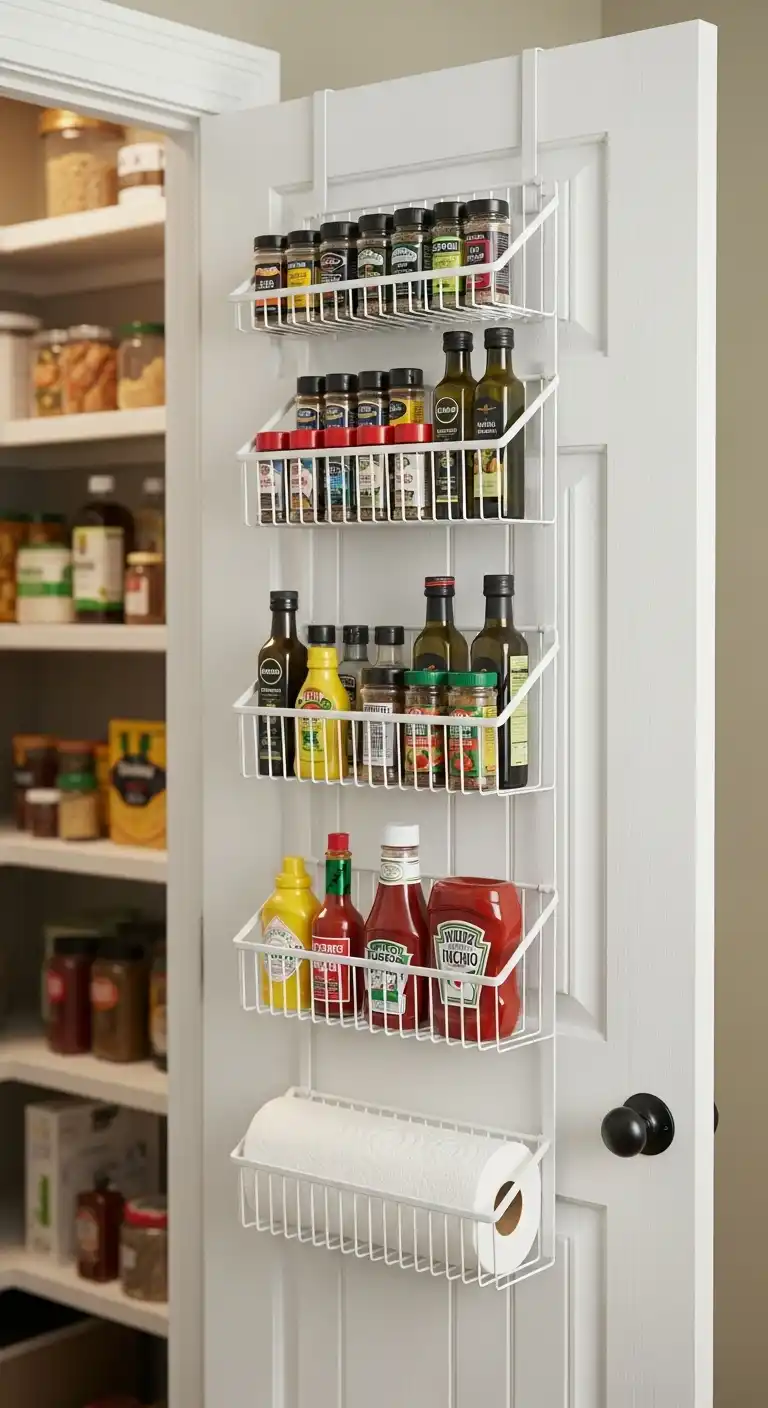
Don’t ignore the back of your pantry door—it’s valuable real estate.
An over-the-door rack can hold spices, condiments, or even paper towels.
These racks come in various sizes, and you can install them without drilling.
It’s a clever way to expand storage without cluttering shelves.
Learn more ways to maximize tight spaces in our guide on narrow pantry ideas.
5. Try Tiered Shelving for Cans
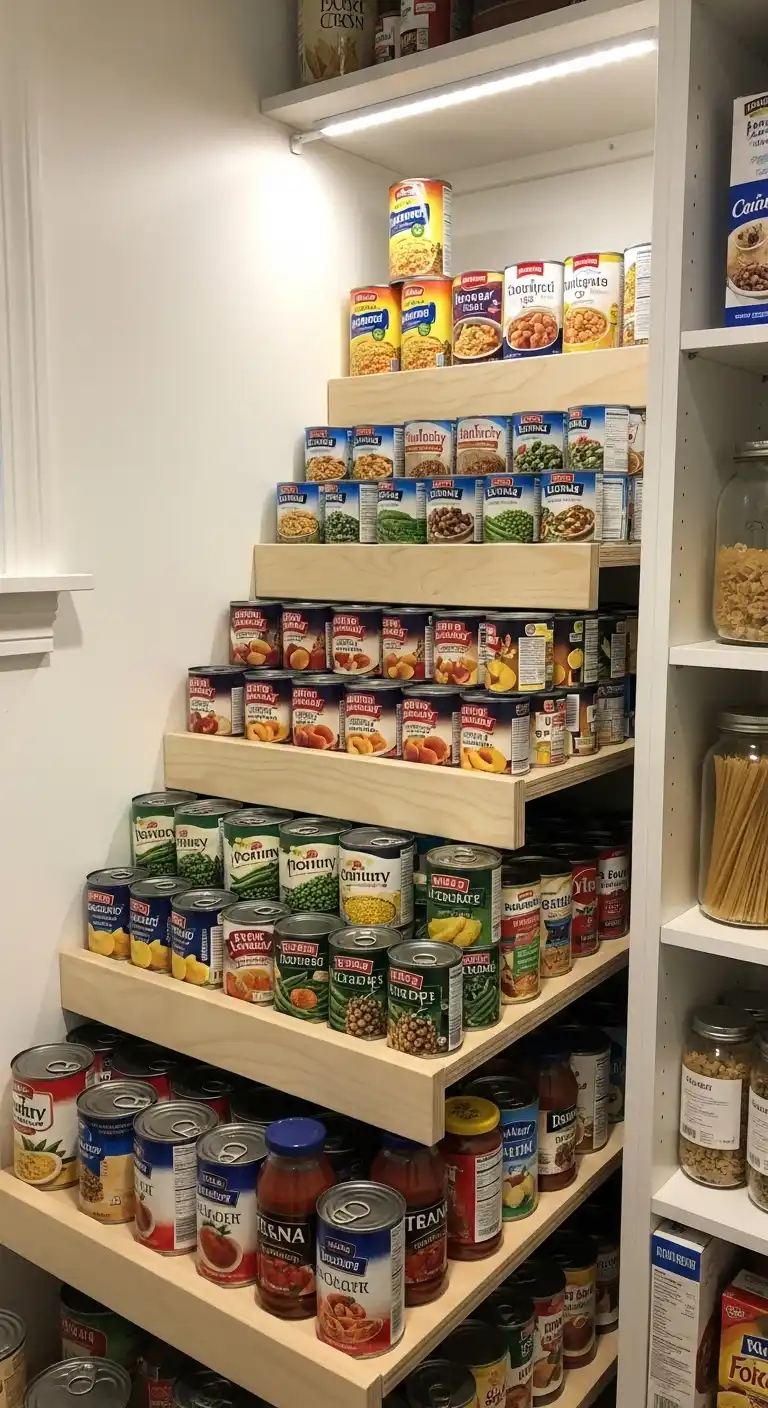
Cans are notorious for toppling over or disappearing behind taller items.
A tiered shelf keeps them organized and visible.
You can make one yourself with wood or buy an adjustable rack.
Either way, the tiered design ensures nothing gets lost at the back.
Pair this with wire pantry organization ideas if you prefer lightweight storage options.
6. Create Snack Stations
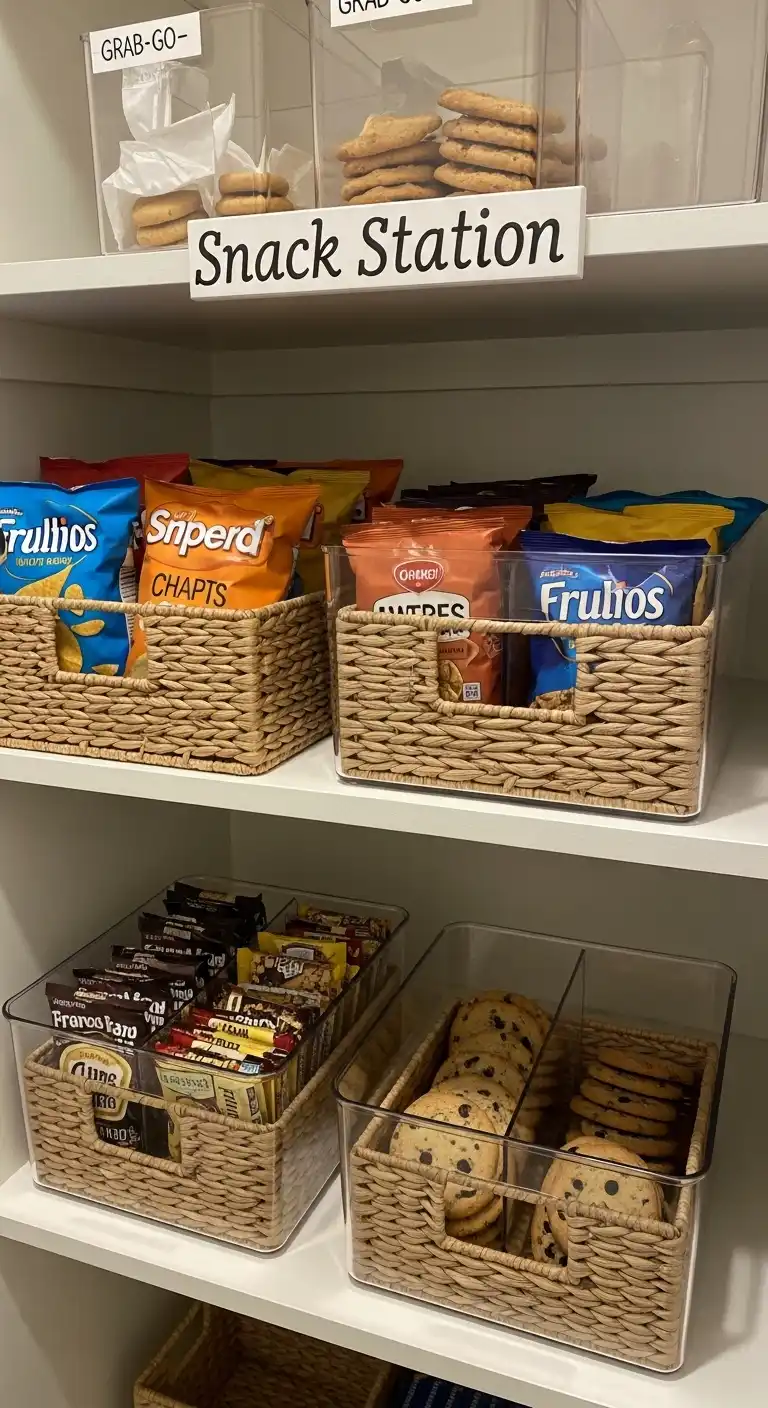
A snack station keeps grab-and-go items in one spot.
🎄 Christmas & Year-End Amazon Deals !
Don’t miss out on the best discounts and top-rated products available right now!
*As an Amazon Associate, I earn from qualifying purchases.
Use small baskets or divided bins to separate chips, granola bars, and cookies.
This not only looks tidy but also makes it easy for kids to pack lunches or grab an after-school bite.
For mini storage setups, see our list of mini fridge snack ideas.
7. Label Everything
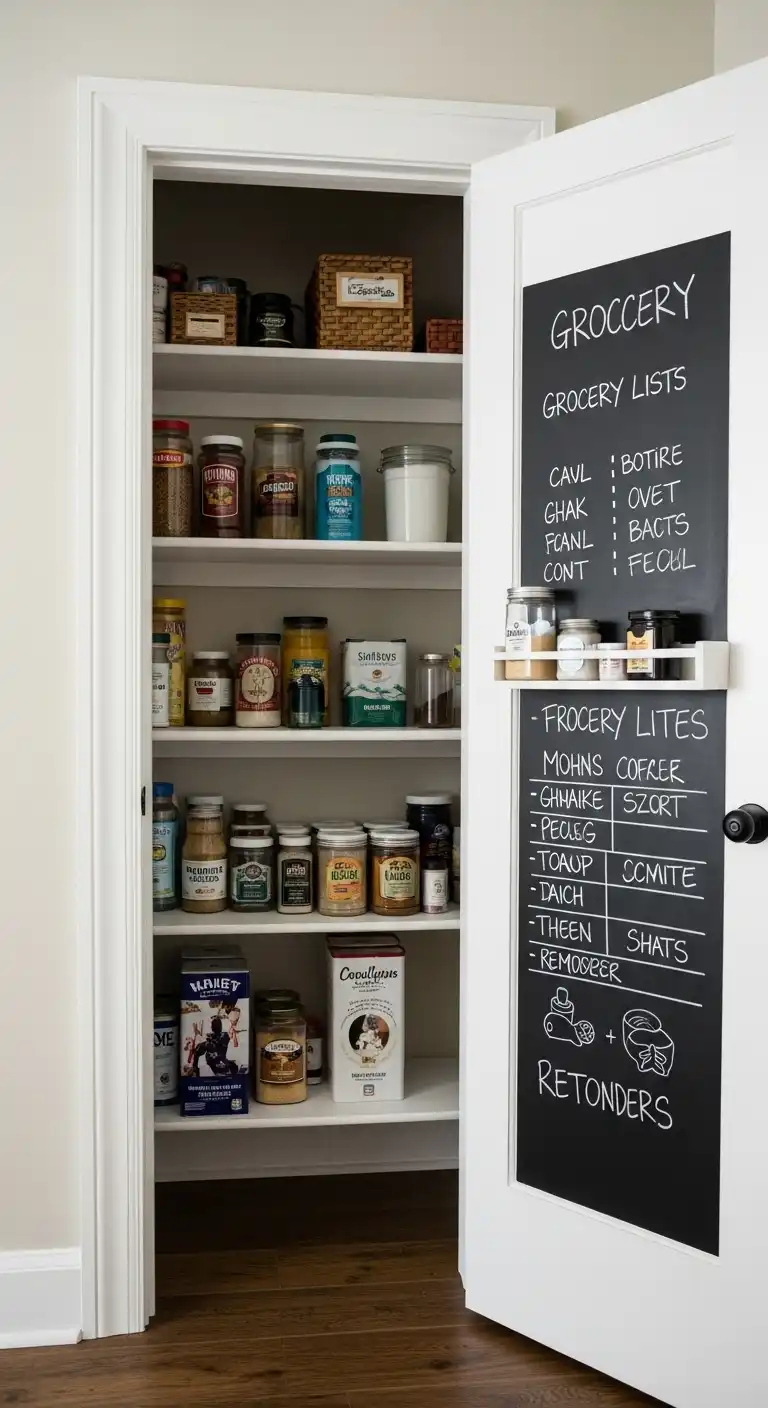
Labels aren’t just cute—they prevent chaos.
When everyone knows where to return items, the pantry stays organized longer.
You can print custom labels, use chalkboard tags, or even write directly on jars.
The key is consistency.
Pair labels with tips from our pantry organization ideas article for a complete system.
8. Add Lazy Susans for Corners
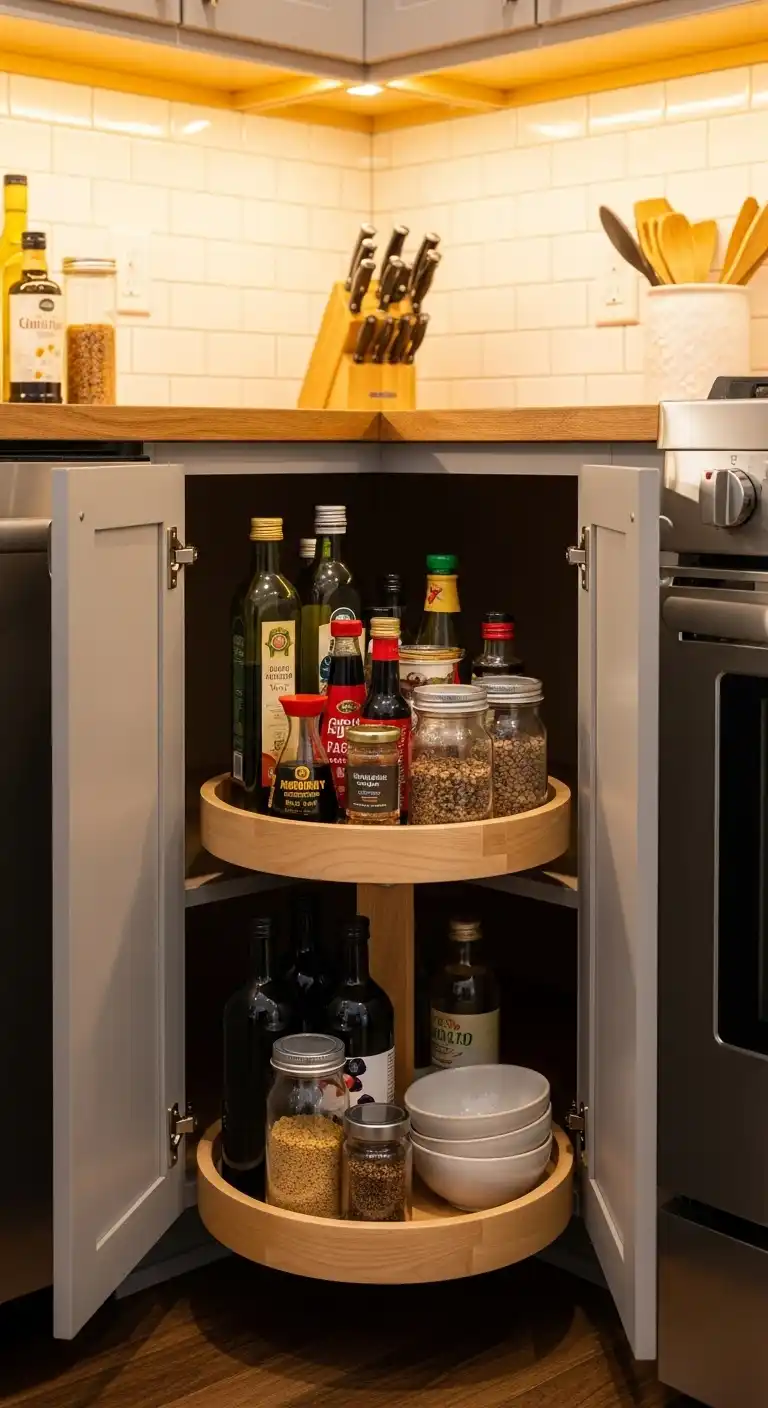
Corners can be wasted space, but a Lazy Susan makes them practical.
Spin it, and you’ll instantly find your sauces, oils, or spices.
They’re especially handy for awkward lower shelves that are hard to reach.
For large pantry setups, see how they work in walk-in pantry organization.
🎄 Christmas & Year-End Amazon Deals !
Don’t miss out on the best discounts and top-rated products available right now!
*As an Amazon Associate, I earn from qualifying purchases.
9. Use Wire Baskets
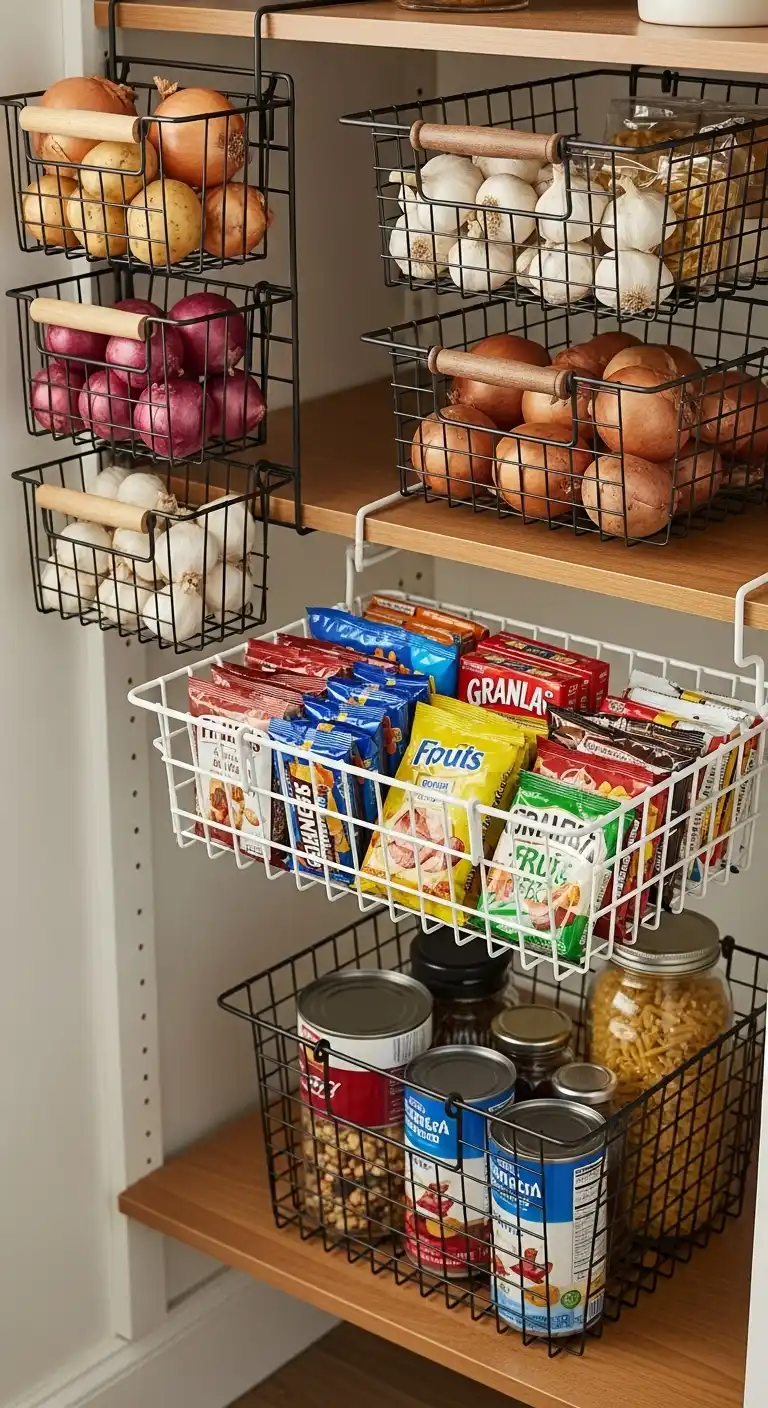
Wire baskets let air circulate while keeping things contained.
They’re great for onions, potatoes, and snacks.
You can attach them to shelves, stack them, or slide them under for easy pull-out storage.
Pair this with our guide on cabinet pantry organization for cabinet-based storage hacks.
10. Hang Hooks for Bags
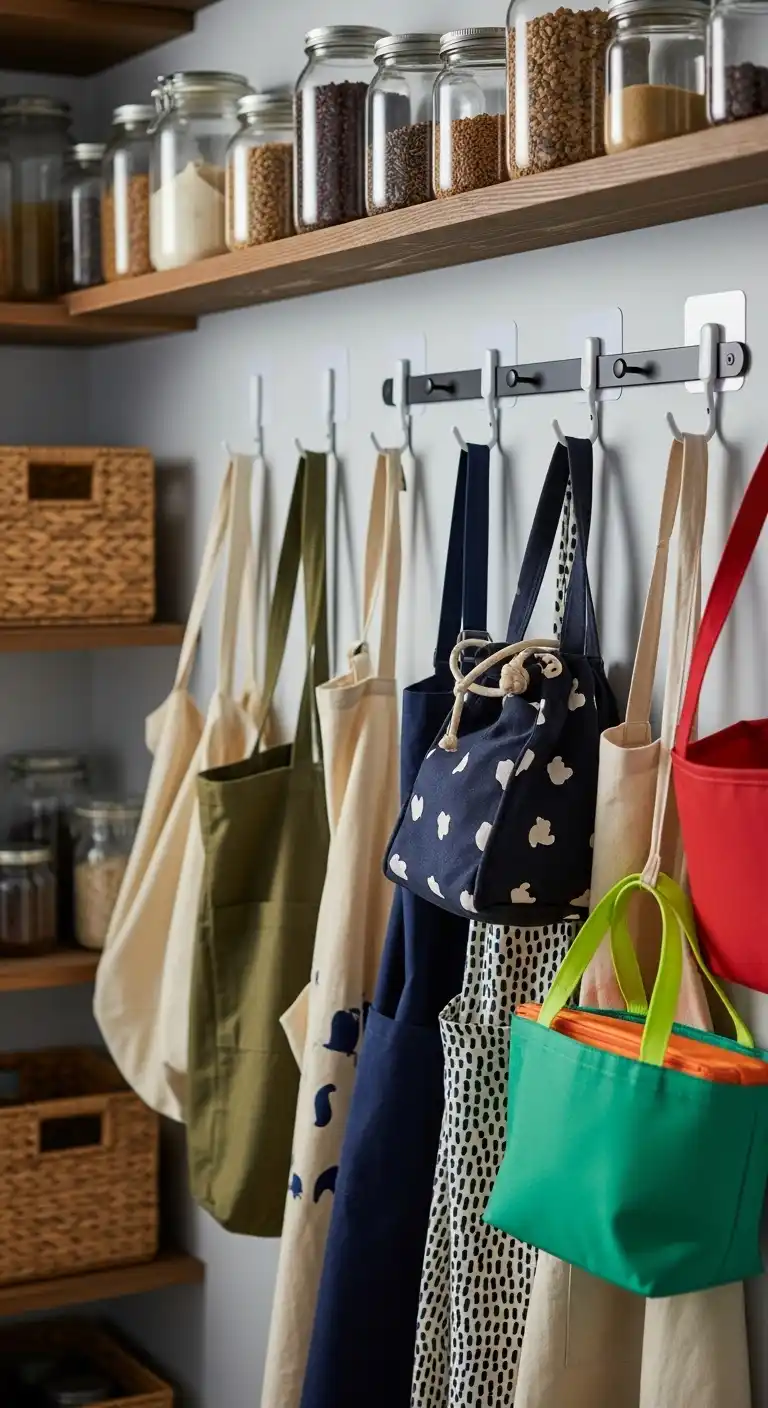
Reusable shopping bags, aprons, or even lunch totes often end up on the floor.
Install adhesive hooks or a wall-mounted rack to hang them neatly.
This clears up floor space while keeping everything handy.
11. Try Drawer Dividers
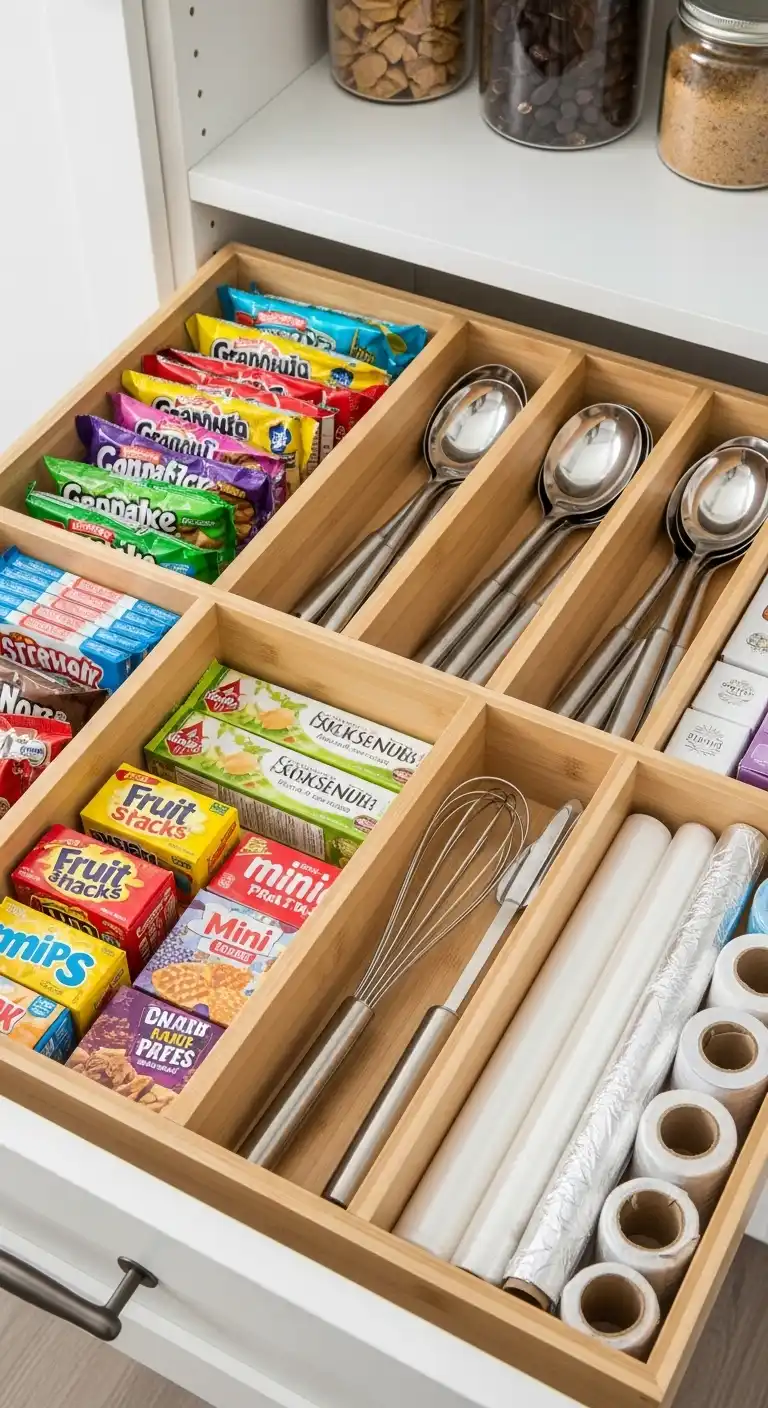
If your pantry has drawers, don’t let them turn into junk zones.
Use dividers for snacks, utensils, or wraps.
This keeps items from sliding around and makes everything easy to grab.
Check out our full breakdown on pantry drawer organization.
12. Repurpose Crates
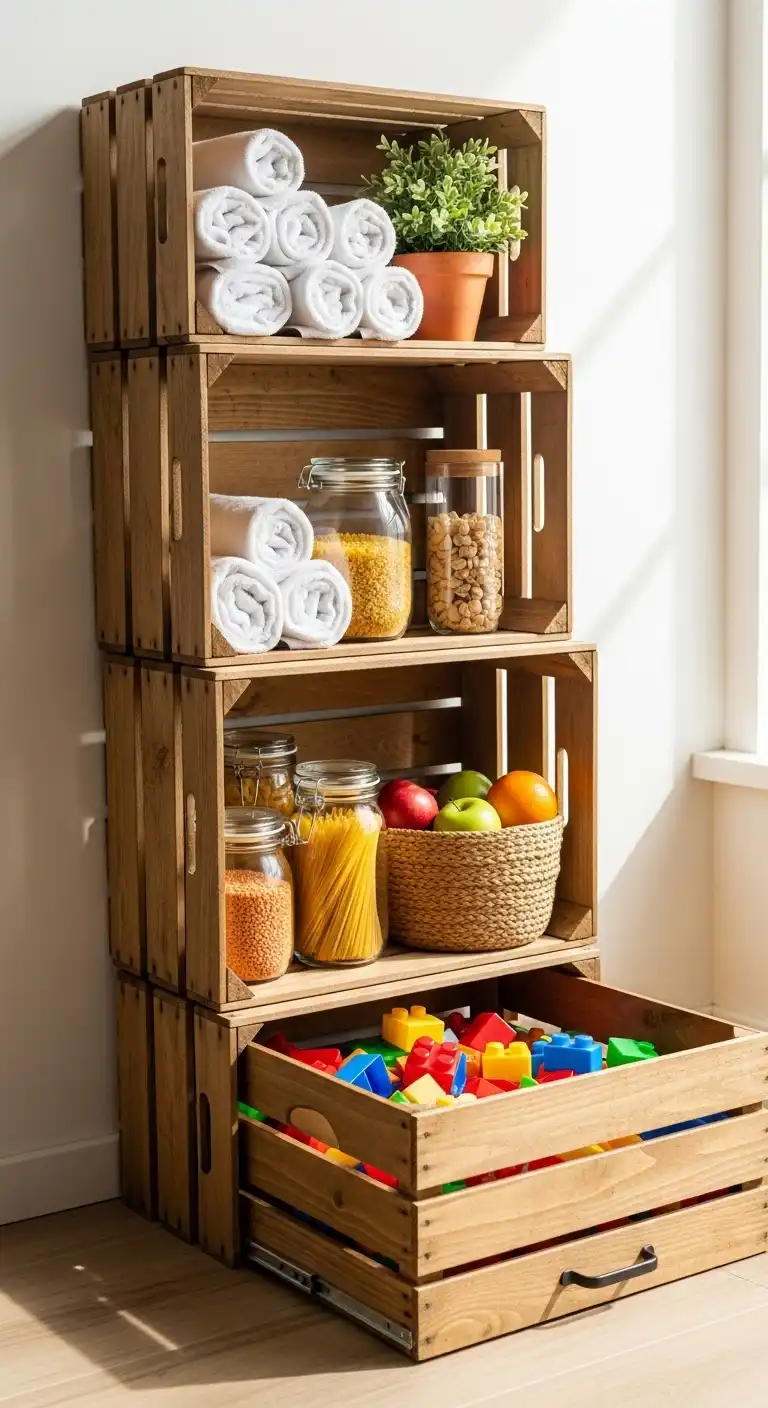
Wooden crates bring a rustic charm and practical storage.
Use them to group bulk items or create pull-out bins on lower shelves.
You can stack them vertically to create a mini shelving unit.
🎄 Christmas & Year-End Amazon Deals !
Don’t miss out on the best discounts and top-rated products available right now!
*As an Amazon Associate, I earn from qualifying purchases.
Bonus: they’re budget-friendly and eco-friendly.
13. Store Baking Sheets Vertically
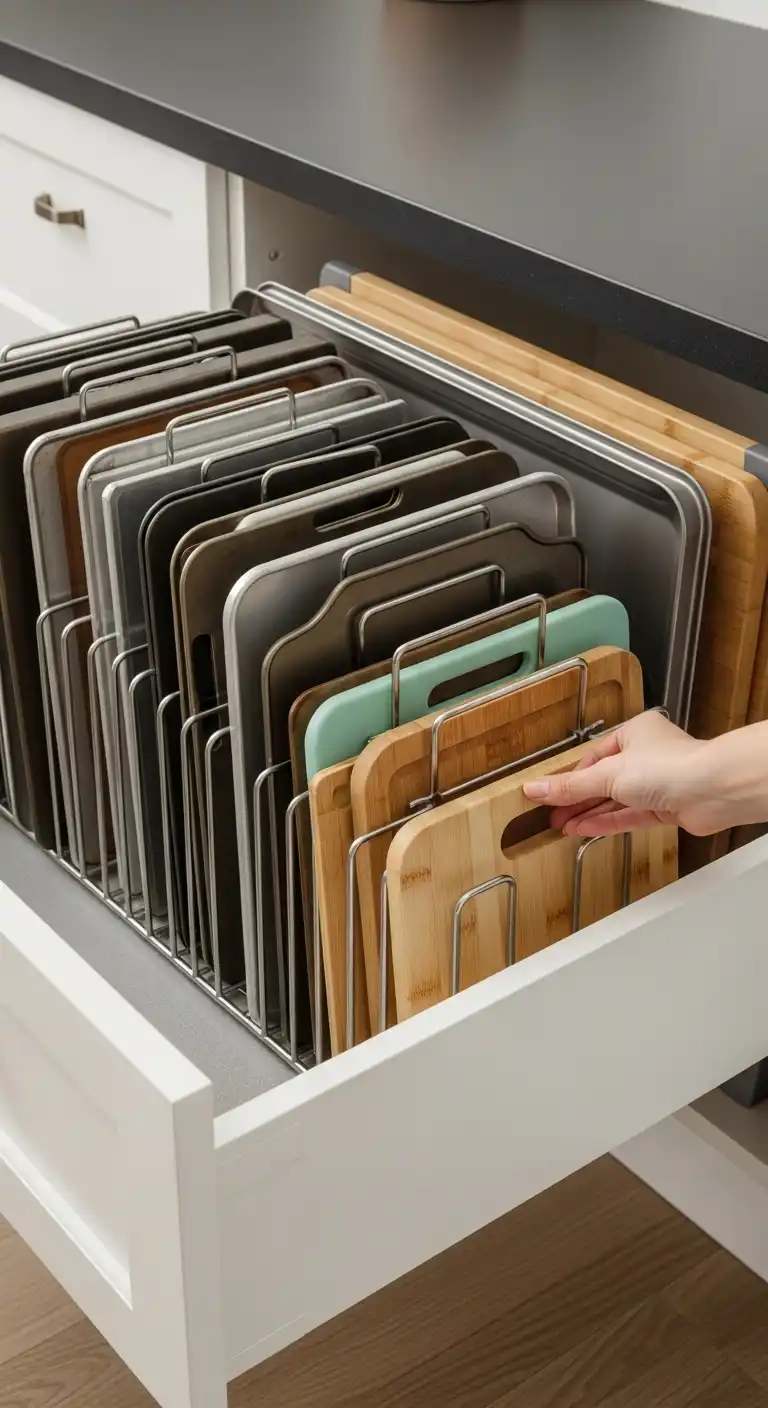
Baking sheets, trays, and cutting boards are awkward to stack.
Instead, use a vertical organizer or repurpose a file sorter.
This makes it easy to slide one out without shifting the whole pile.
14. Use Glass Canisters
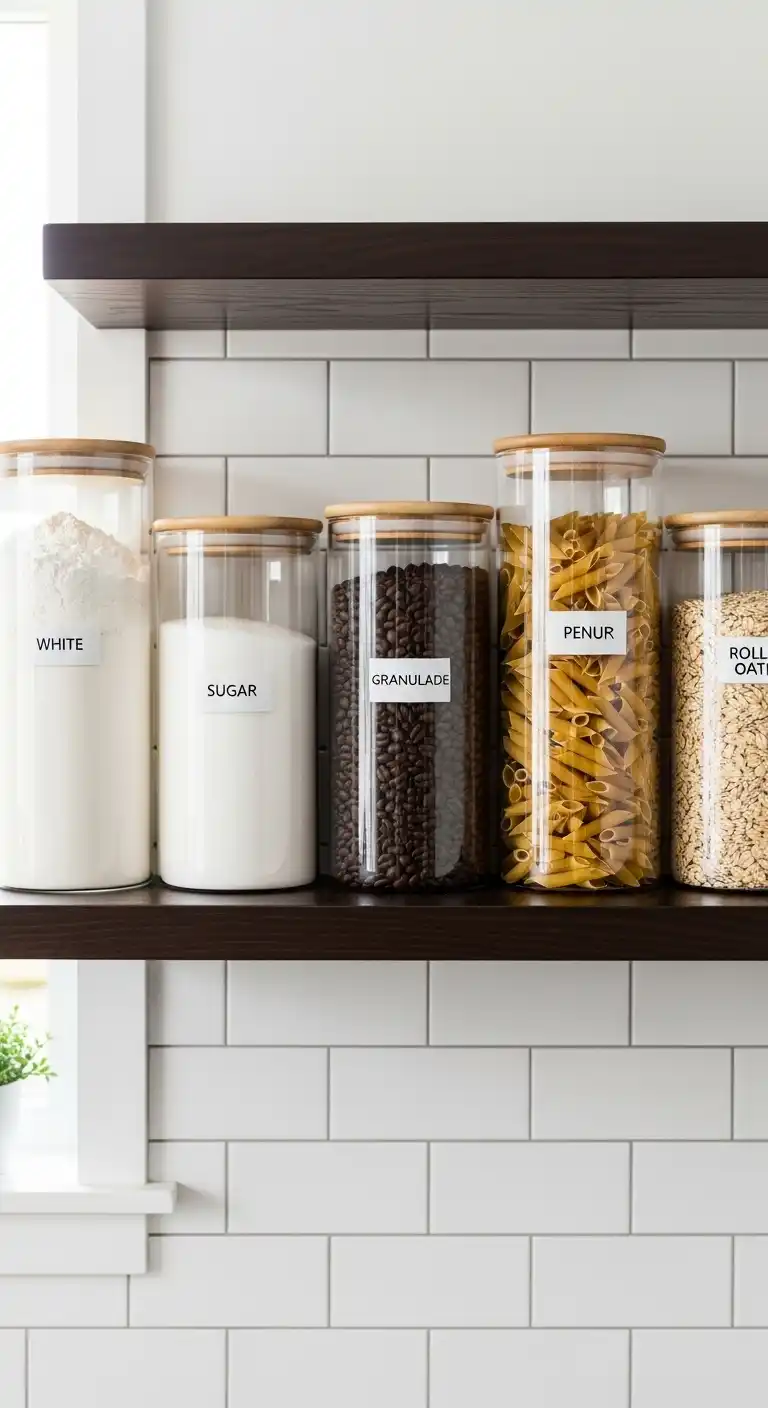
Glass canisters are elegant and functional.
Store flour, sugar, or coffee in them for a uniform look.
They also keep ingredients fresh and cut down on messy packaging clutter.
Pair them with tips on how to maximize pantry space.
15. Add a Chalkboard Wall

If you love DIY touches, paint the inside of your pantry door with chalkboard paint.
Use it for grocery lists, meal planning, or reminders.
It adds personality while serving a practical purpose.
16. Install Tension Rods
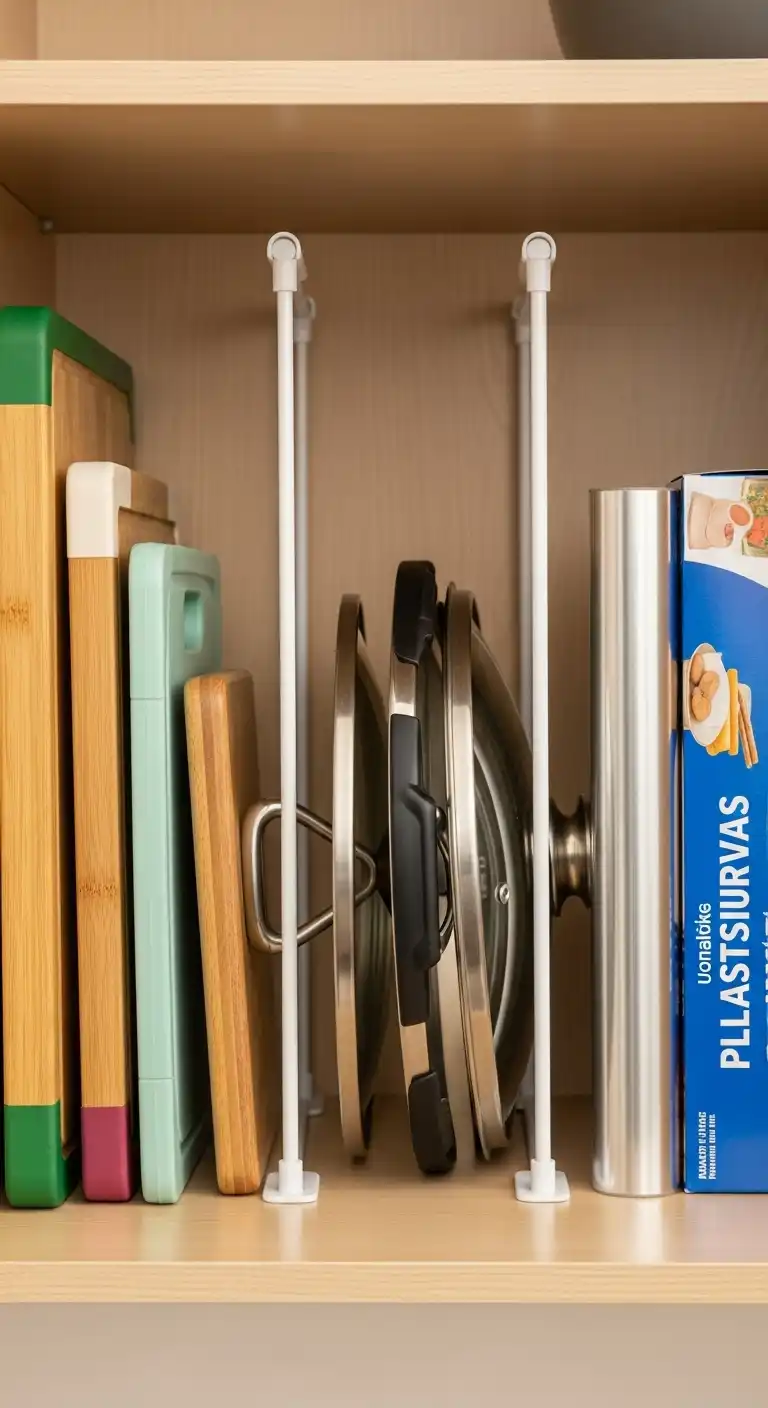
Tension rods aren’t just for curtains.
🎄 Christmas & Year-End Amazon Deals !
Don’t miss out on the best discounts and top-rated products available right now!
*As an Amazon Associate, I earn from qualifying purchases.
Use them to create dividers for cutting boards, lids, or wraps.
They’re inexpensive, easy to install, and adjustable to fit your shelves.
17. Create a Breakfast Station
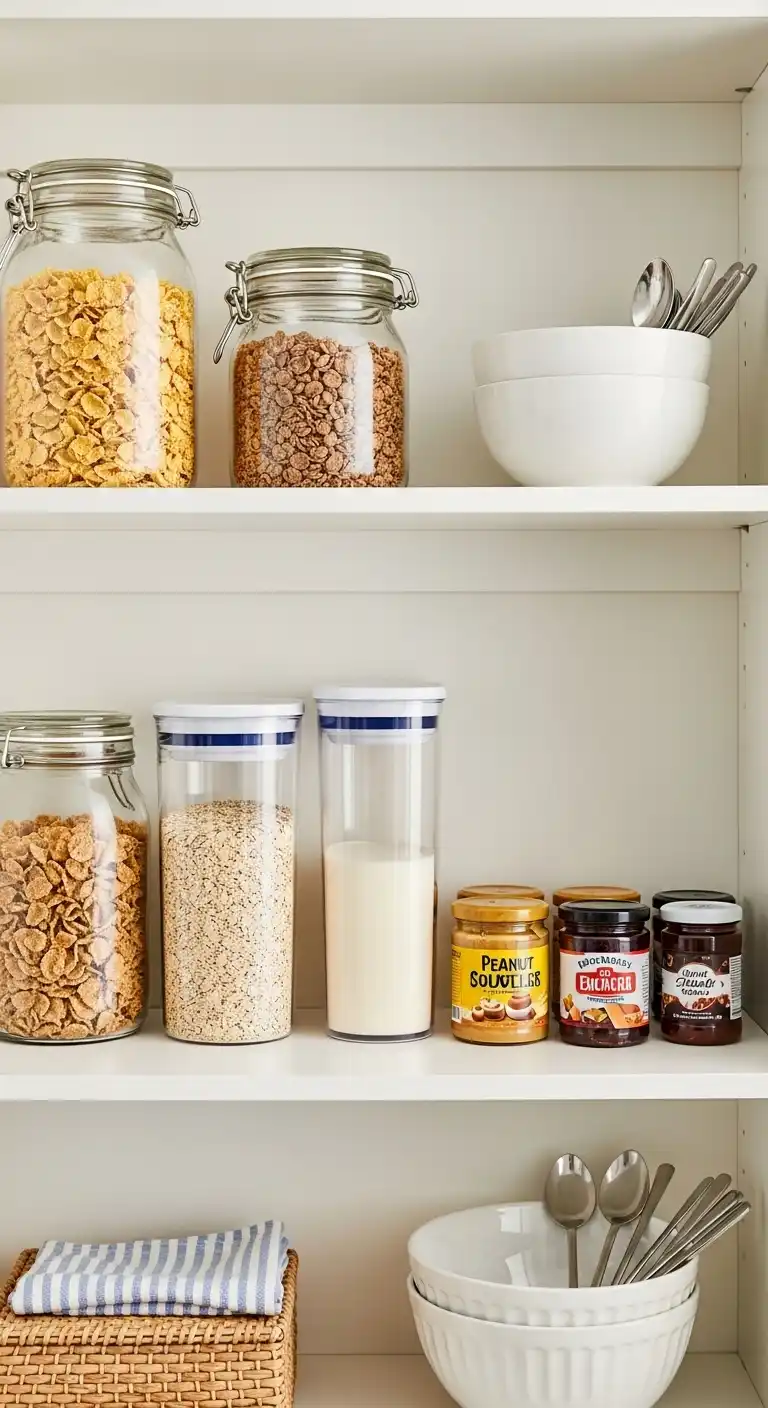
Designate one shelf for cereal, oatmeal, and spreads.
Add bowls and spoons nearby for a self-serve breakfast corner.
This setup saves time in the mornings and keeps your pantry more structured.
18. Rotate Food with FIFO
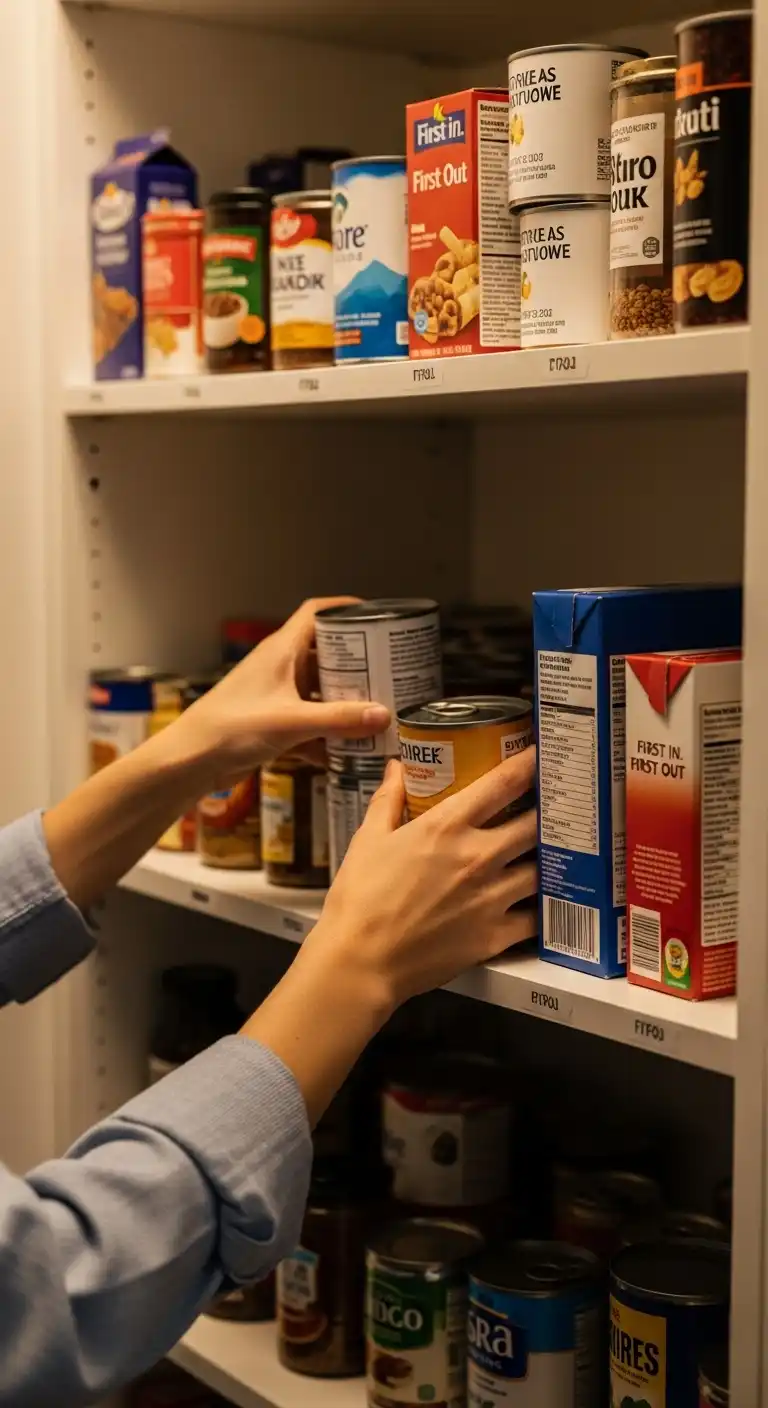
The “First In, First Out” method prevents expired food.
Store newer items behind older ones, so you use them in order.
This tip works especially well with canned goods and boxed food.
For deeper insights, see how pantry organization can help with food storage.
19. Try Narrow Shelf Inserts
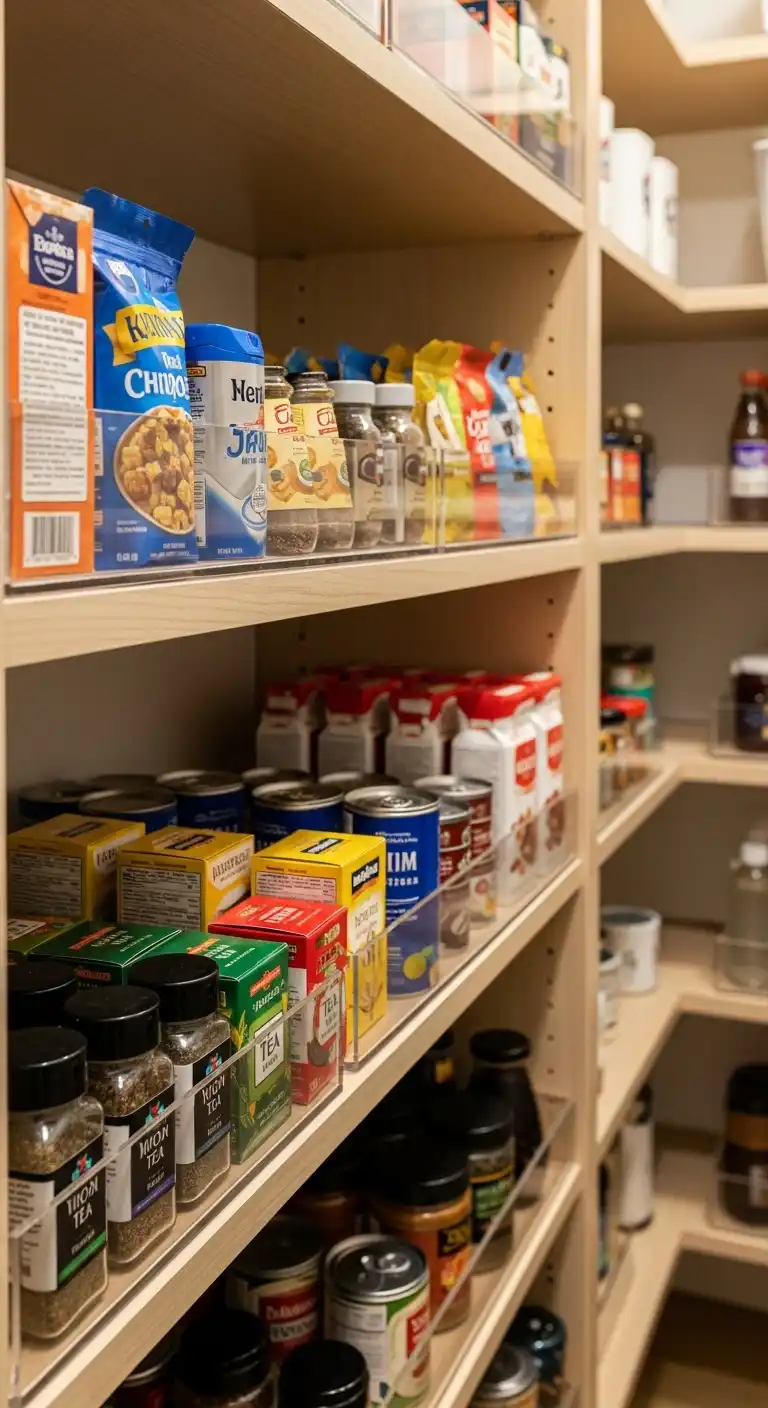
If your pantry shelves are too deep, add narrow inserts to create levels.
This keeps smaller items from getting buried.
These inserts are especially useful in slim spaces.
🎄 Christmas & Year-End Amazon Deals !
Don’t miss out on the best discounts and top-rated products available right now!
*As an Amazon Associate, I earn from qualifying purchases.
Pair this with narrow pantry organization for more tips.
20. Keep a Cleaning Kit Handy
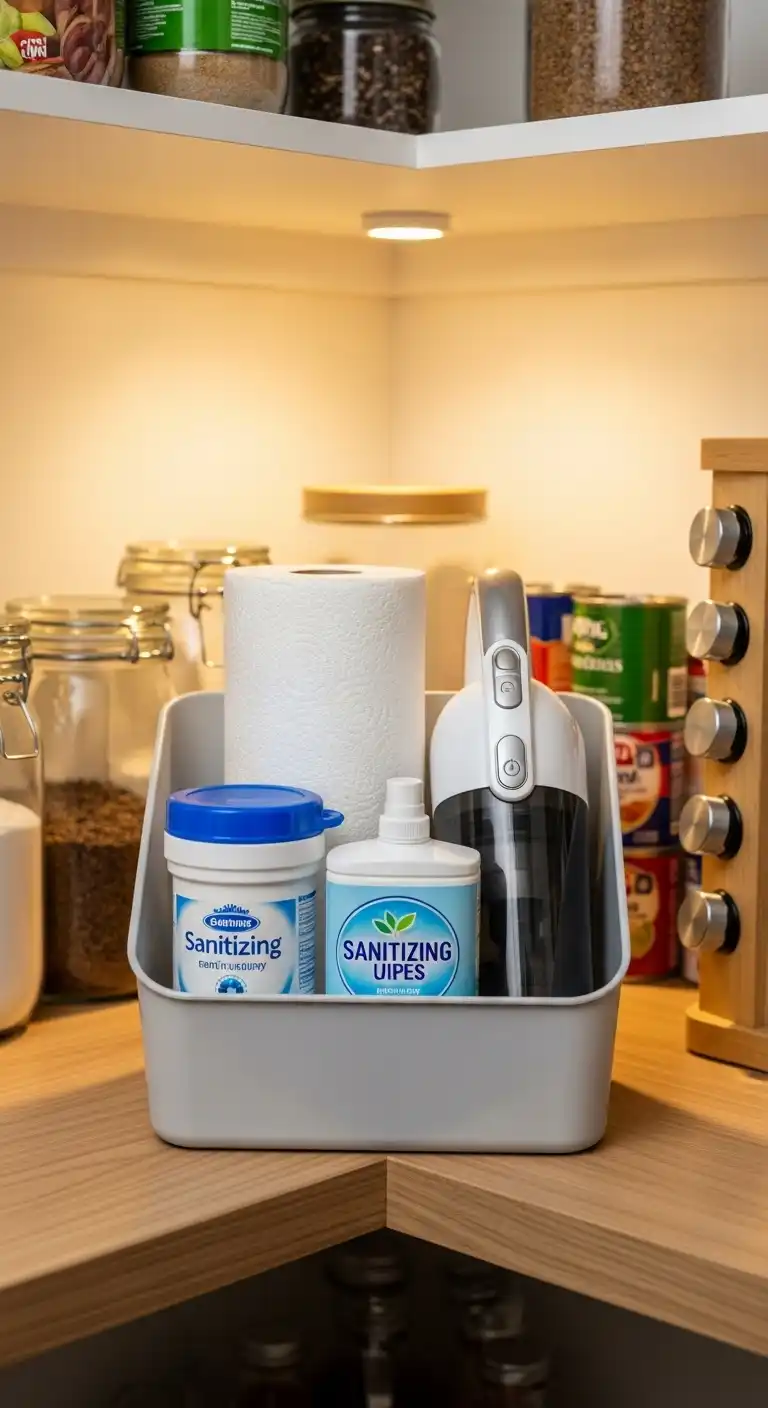
Pantries get messy—crumbs, spills, and sticky jars are inevitable.
Keep a small cleaning kit with wipes, paper towels, and a handheld vacuum nearby.
This makes it easier to tidy up on the spot instead of letting messes build.
Smart Tips to Maximize Results
- Start small. Don’t overwhelm yourself—tackle one shelf at a time.
- Use see-through storage. Out of sight often means out of mind. Clear bins or jars keep food visible.
- Rotate regularly. Place new groceries at the back and use the older ones first.
- Think vertical. Tall baskets, stackable bins, and risers create extra “hidden” space.
Do’s and Don’ts of Pantry Organization
Do’s:
- Label everything (you’ll thank yourself later).
- Keep snacks within kid-friendly reach.
- Adjust shelves if possible to fit your containers better.
Don’ts:
- Don’t overcrowd bins—you’ll never find what you need.
- Don’t buy organizing products without a plan.
- Don’t ignore airflow—completely sealed corners can lead to stale or humid food.
Wrapping It Up: Small Tweaks, Big Payoff
Pantry organization doesn’t require a massive budget or an Instagram-perfect setup.
What matters most is making the space work for you.
A few clear jars, a couple of baskets, and a solid system can transform chaos into calm.
Start with one trick, then build on it—your pantry (and sanity) will thank you.
Actionable takeaway: Pick two small changes from this guide and implement them this week. Momentum is everything—once you start, it gets easier.
FAQs About DIY Pantry Organization
Q1. Do I need to buy expensive containers to organize my pantry?
Not at all. Reusing glass jars, old baskets, or even shoeboxes can work wonders.
Q2. How often should I reorganize my pantry?
Every 3–6 months is a sweet spot. Or whenever things start looking messy again.
Q3. What’s the best way to organize a small pantry?
Focus on vertical space—think door racks, hanging baskets, and stackable bins.
Q4. How do I keep my pantry pest-free?
Use airtight containers, wipe shelves regularly, and avoid keeping open food bags.

